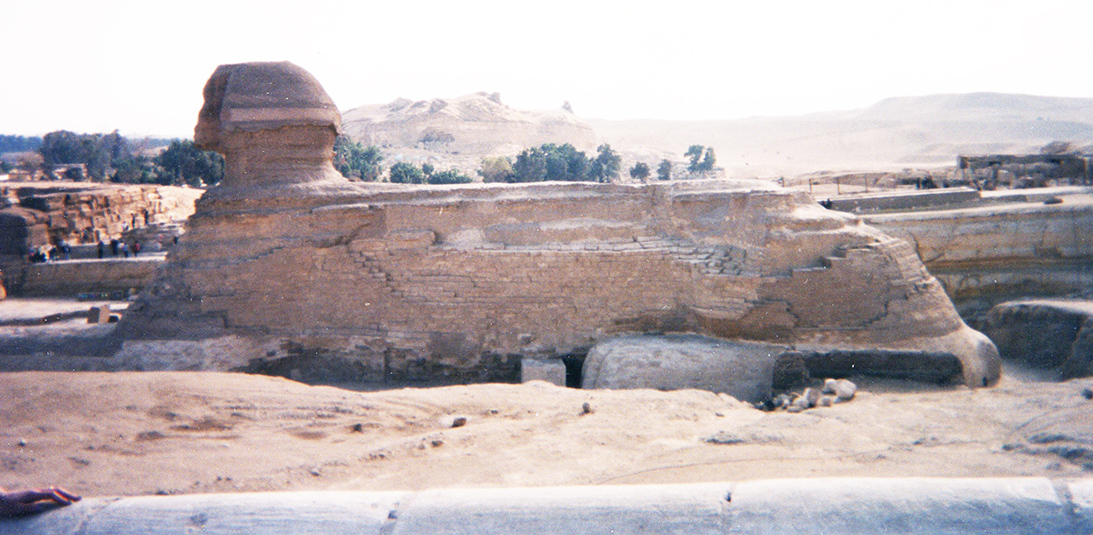
The distance from the Pyramids to the Sphinx is not far.
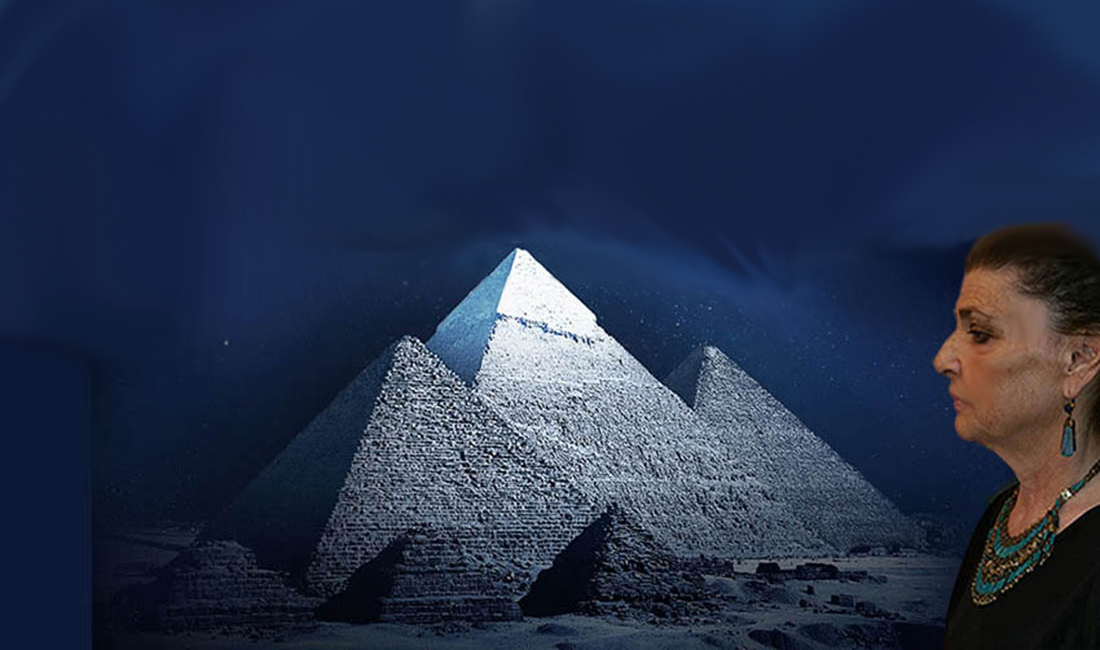
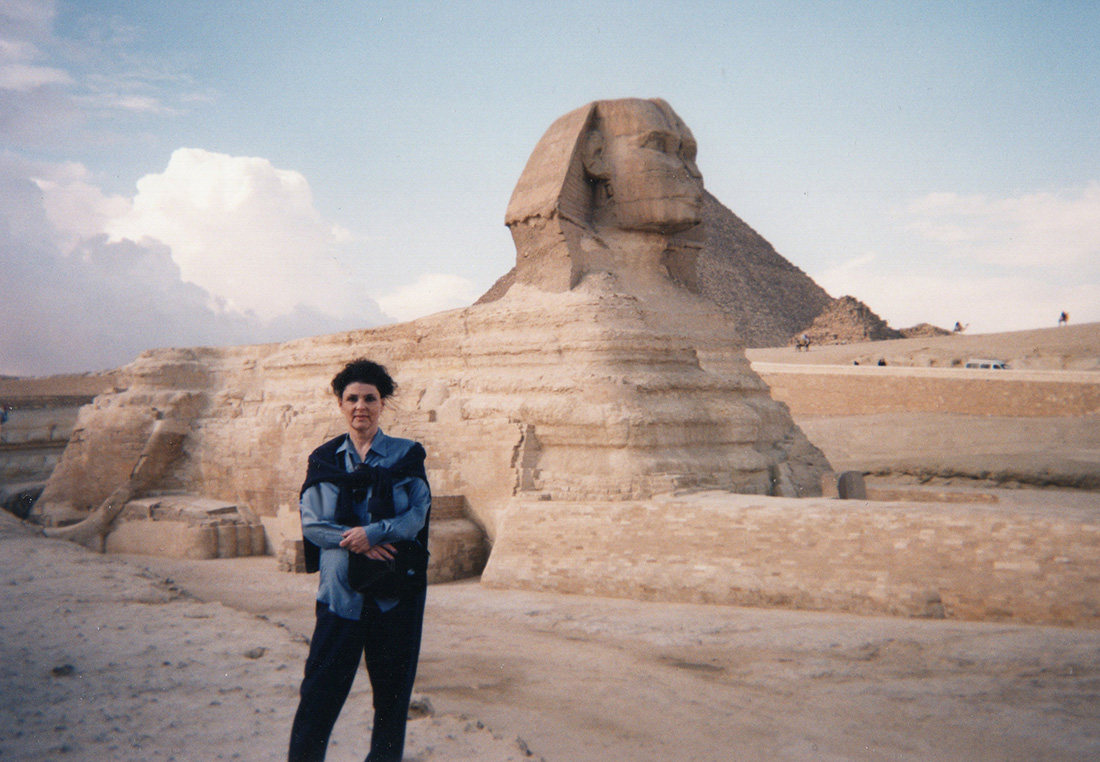
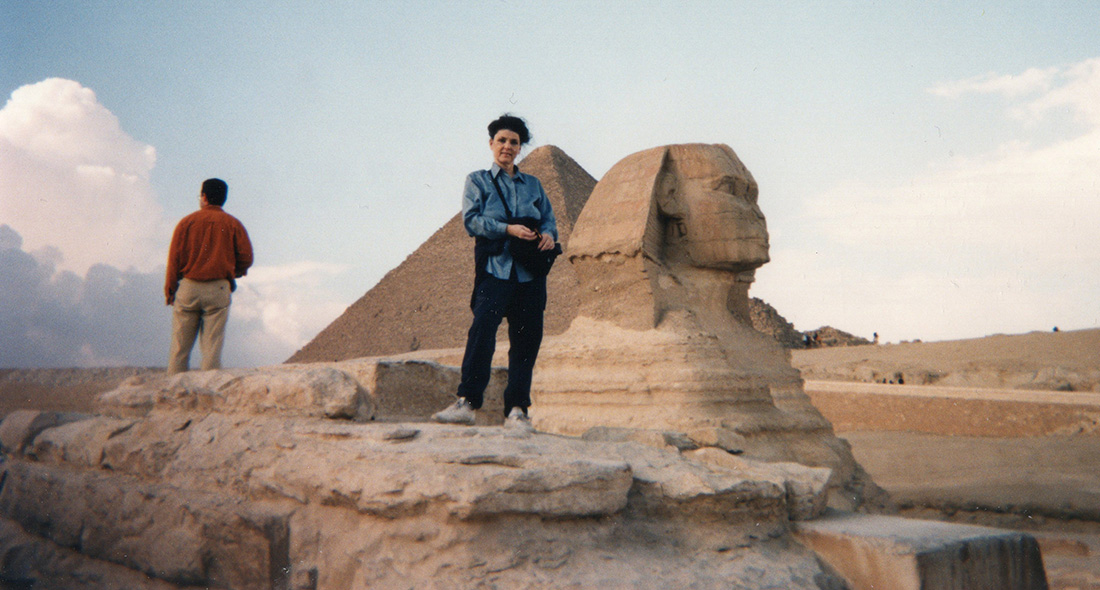
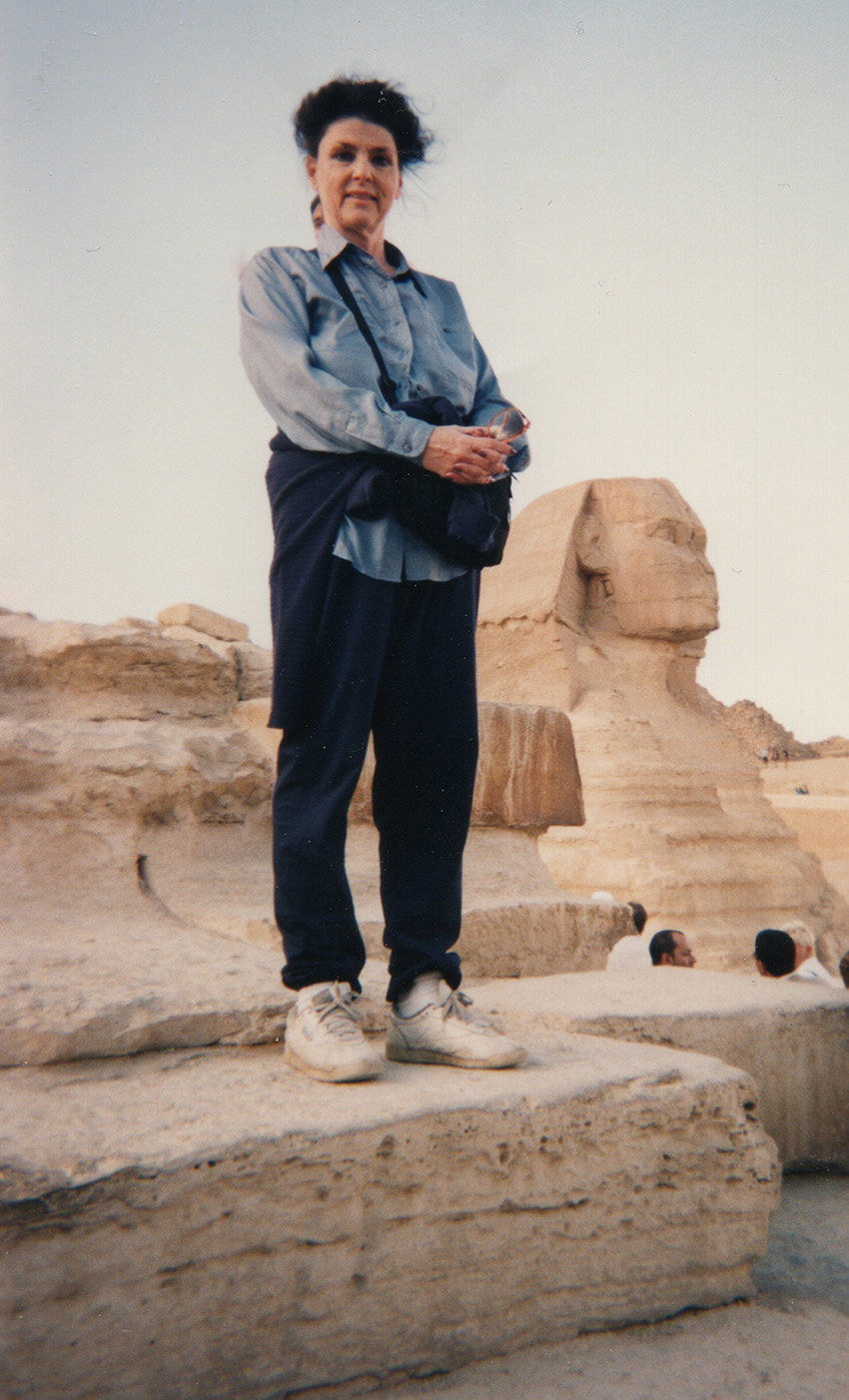
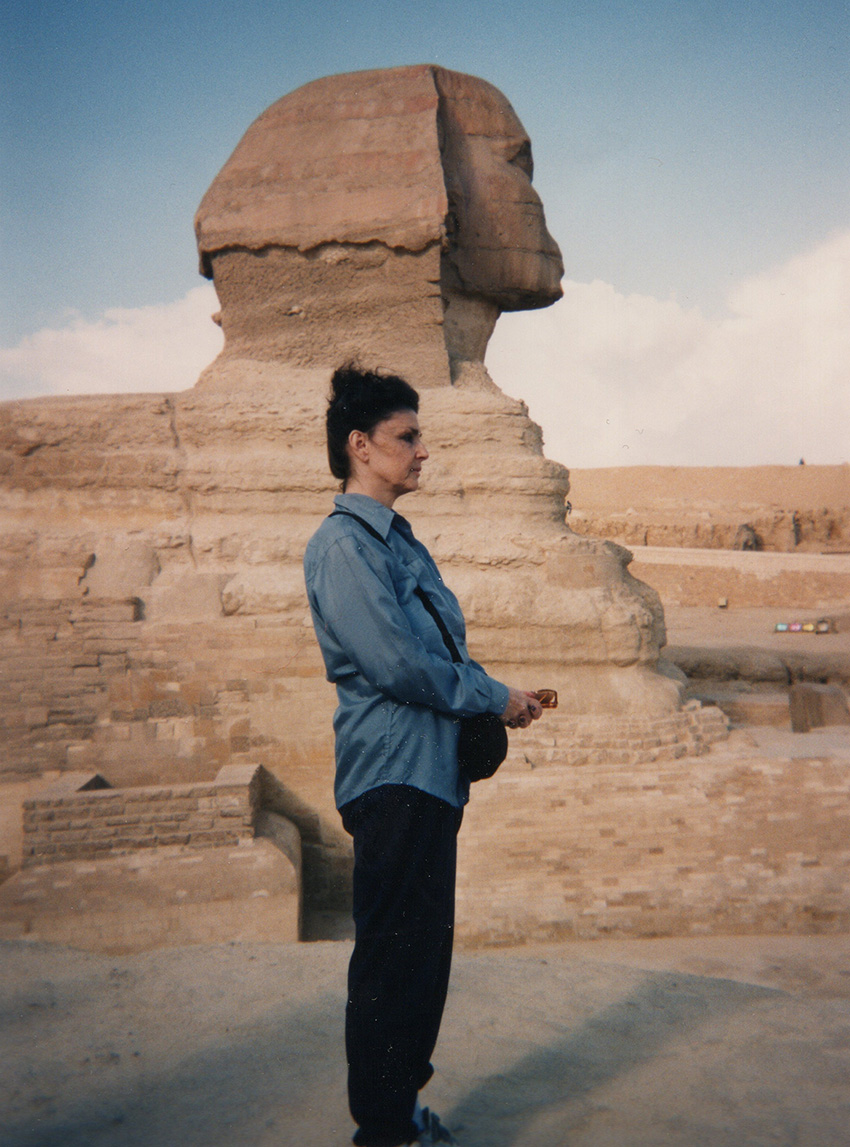
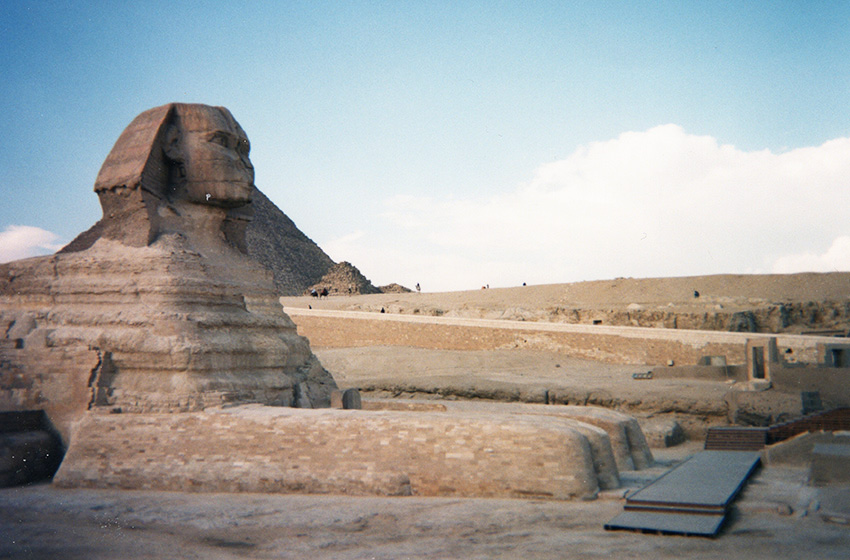
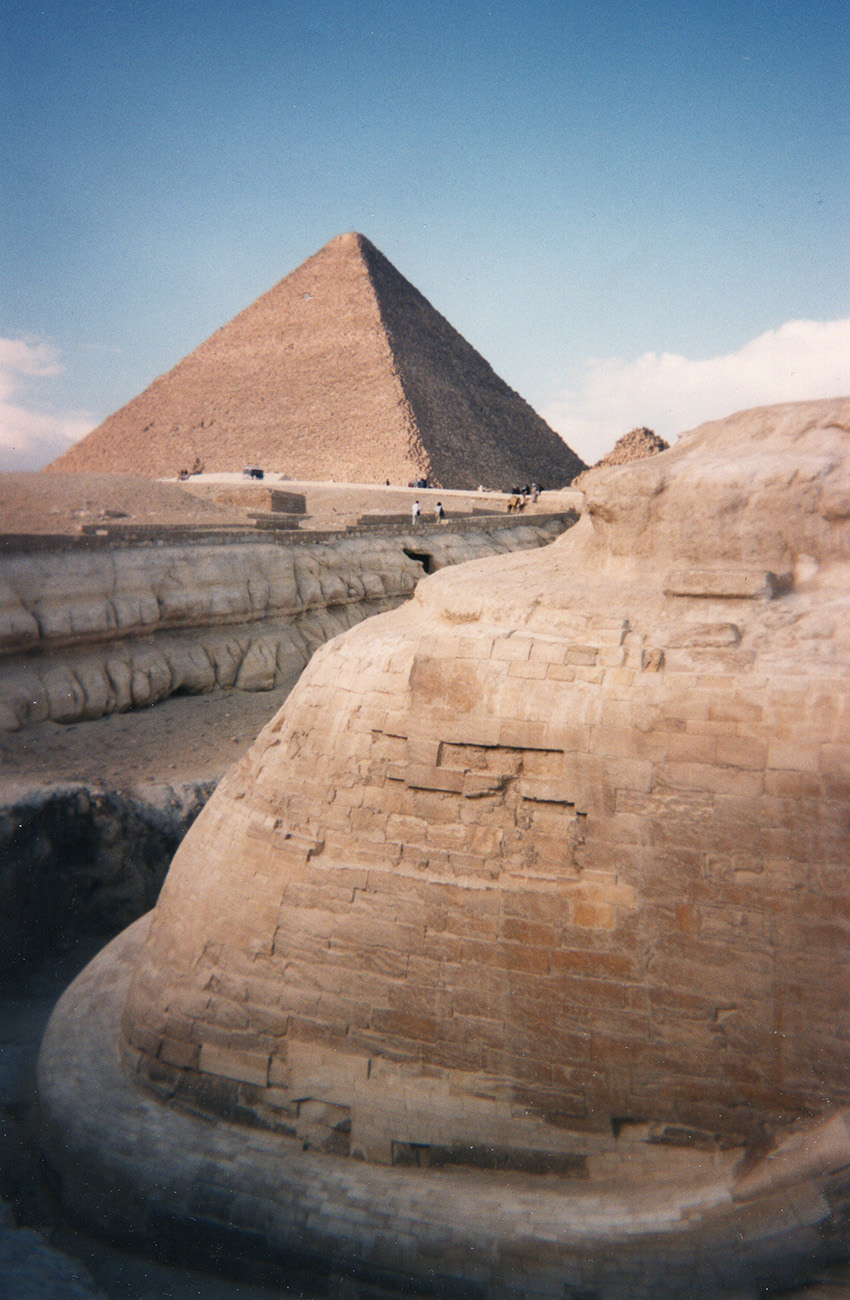

The distance from the Pyramids to the Sphinx is not far.







The Sphinx is a limestone statue of a mythical creature with the body of a lion and the head of a human. Facing directly from West to East, it stands on the Giza Plateau on the west bank of the Nile in Giza, Egypt. The face of the Sphinx is generally believed to represent the Pharaoh Khafre. Cut from the bedrock, the original shape of the Sphinx has been restored with layers of blocks. It measures 73 metres (240 ft) long from paw to tail, 20.21 m (66.31 ft) high from the base to the top of the head and 19 metres (62 ft) wide at its rear haunches. It is the oldest known monumental sculpture in Egypt and is commonly believed to have been built by ancient Egyptians of the Old Kingdom during the reign of the Pharaoh Khafre (c 2558-2532 BC). Read more
The Sphinx water erosion hypothesis is a fringe claim contending that the main type of weathering evident on the enclosure walls of the Great Sphinx was caused by prolonged and extensive rainfall that would have predated the time of Djedefre and Khafre, the Pharaohs credited by most modern Egyptologists with building the Great Sphinx and Second Pyramid at Giza around 2500 BC. Egyptologists, geologists and others have rejected the water erosion hypothesis and the idea of an older Sphinx, offering various alternative explanations for the cause and date of the erosion. Read more
One of the proponents of the Sphinx water erosion hypothesis was American author, lecturer, and Egyptian tour guide John Anthony West (July 9, 1932-February 6, 2018). In an interesting synchronicity, who should show up a few hours later but John Anthony West who was staying at the Mena House a few doors down from Irene's room. We ran into him in the lobby after returning to the hotel.
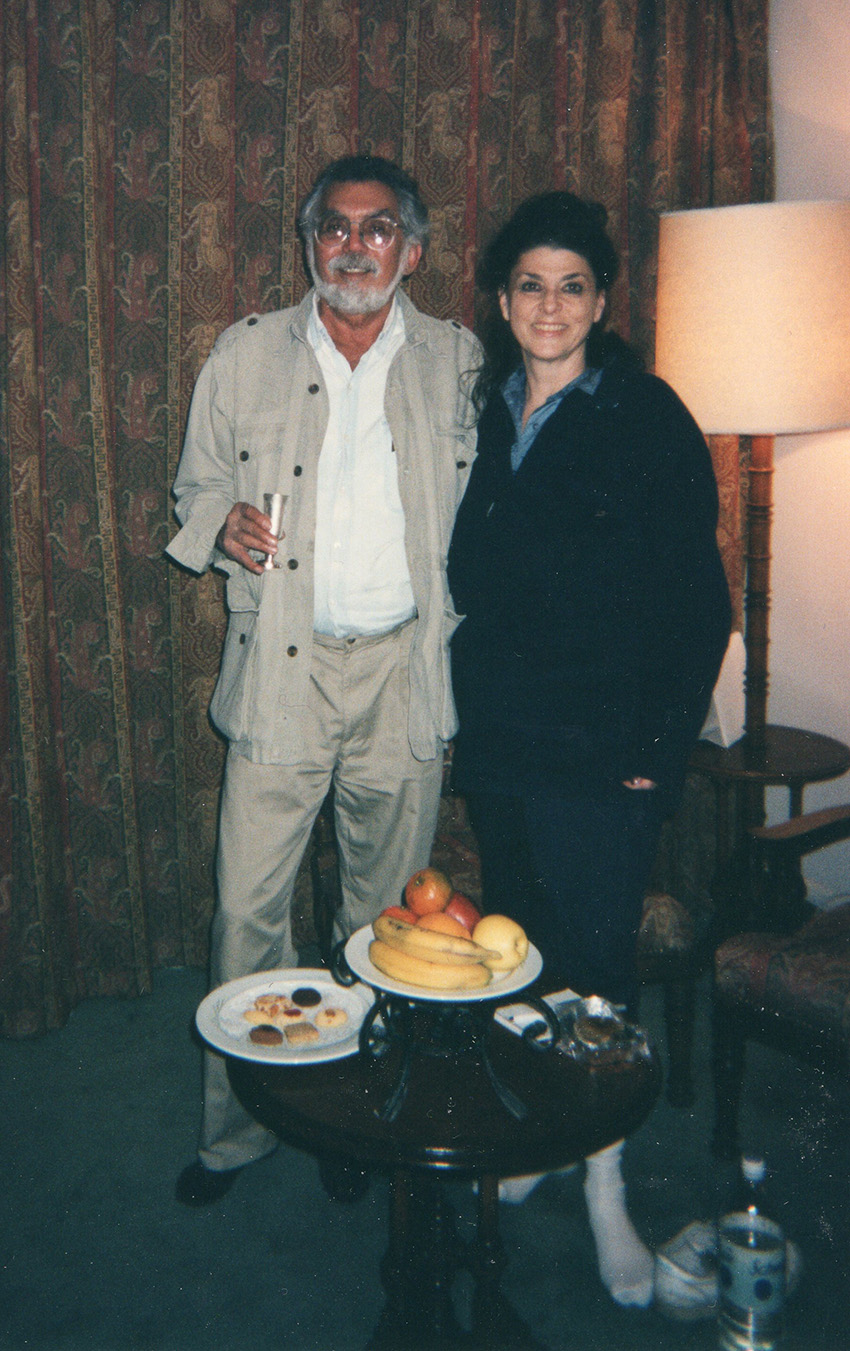
John was in Egypt with a tour group. After some conversation, he invited us to his room to discuss the sphinx and related topics. He was friendly and candid in his statements about his work. We appear to know many of the same researchers and shared experiences. John was knowledgeable on sacred geometry and its uses in setting up most of the ancient ruins in Egypt. It is the quest that is important and the souls of the questers who return at the end of a cycle to finish something they started in the beginning ...